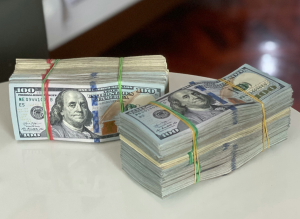Compound interest is when you earn interest on the principal investment and the interest you have already earned. In other words, you earn interest on the previous interest earned from the principal investment.
For example, you invest $1,000 and receive 5% interest annually. In the first year, you would earn $50 because it would be 5% of the principal $1,000 investment. However, after the second year, you would earn $52.50 in interest because it is 5% of the now $1,050 balance.
You can maximize your earnings from compound interest by investing more every week or month to increase the gains faster. Think of compound interest as a snowball effect where you roll a snowball down a hill, and it keeps getting more significant from all the snow it collects along the way. That will happen to your investment as it accelerates and accumulates more compounding interest payments over time.
Strategies for Growing Your Wealth Over Time
Do you want to grow your wealth by making investments that receive compounding interest? Here are the top five strategies to help you get started.
1. Start Investing as Early as Possible
The best way to maximize your profits from compound interest is to start making investments at a younger age. Although nothing is wrong with beginning as an investor in your 30s and 40s, you can make more money from compound interest over time if you start investing in your 20s.
For example, invest $5,000 annually starting at age 25 and earn 7% interest annually. You will have over $1 million in your investment account by turning 65. Over the 40 years between age 25 and 65, you would have only invested around $200,000. But thanks to the 7% compound interest, you will earn an additional $800,000 over those 40 years. That is the power of compound interest.
2. Consider Your Investment Options
Consider where you would like to invest your money to earn compound interest. Would you prefer a safer investment with no risk of losing money or a more volatile investment option that could receive faster gains from interest and a rising value?
Here are the most popular investment instruments for earning compound interest:
- Certificates of Deposit (CDs)
- High-yield savings accounts
- Money market accounts
- Bonds
- Dividend stocks and ETFs
CDs, money market accounts, and high-yield savings accounts are the safest investment instruments for earning compound interest because they are far less likely to lose value. High-yield savings accounts won’t lose any value because the FDIC insures them. You can only lose money in them if you get charged bank fees for not meeting the minimum balance threshold.
Bonds, dividend stocks, and ETFs carry higher risks but potentially offer higher rewards. Not only can the investment values rise quickly, but they often pay generous compounding interest on top of those rising values. You could make huge earnings here if you know how to pick the right security investments.
3. Set Up a Tax Advantaged Investment Account
Income taxes can diminish your profits from compound interest if you don’t have a tax-advantaged investment account, such as an IRA, 401(k), or Roth IRA. The problem with high-yield savings accounts and CDs is that you must pay taxes on the interest earnings each year. That is not necessarily the case with these other investment accounts.
For example, an IRA and 401(k) are tax-deferred retirement accounts, which means they don’t require you to pay income taxes on your contributions and earnings until you are ready to withdraw from those accounts. That allows you to continuously compound your money over several decades without paying taxes.
On the other hand, a Roth IRA requires you to pay taxes on your contributions but not on your earnings. So, suppose your Roth IRA builds enormous wealth from the rising value of the after-tax contributions and all the compounding interest payments. In that case, you won’t have to pay taxes on any of it.
4. Consider the Expense Ratio of Mutual Funds
If you invest in mutual funds like ETFs, they will charge you an annual expense ratio based on the number of shares owned in the fund.
For instance, if you own an ETF with a 3% expense ratio for managing the fund, you pay a 3% fee on the total value of your portfolio per year. Even if the ETF pays a quarterly or yearly dividend that offsets the expense ratio cost, those additional fees will still eat into your interest profits.
So, keep that in mind when investing in mutual funds. Try to find mutual funds with lower expense ratios and high dividend payments.
5. Set Up a Reinvestment Plan
CDs and high-yield savings accounts will reinvest your earned interest automatically. However, you must set up a reinvestment plan with your broker to reinvest dividend earnings from stocks or mutual funds.
Most online brokerages have reinvestment plans you can set up to reinvest your dividend earnings automatically. Otherwise, those earnings will just get added to the cash balance in your brokerage account. Setting up the reinvestment plan to reinvest the dividends each time they get paid out is much easier.
6. Consult a Financial Advisor
Not everyone is financially savvy, and that is okay. If you still have questions about which investments can earn you the highest returns and compounding interest, seek the advice of a financial advisor or consultant. They can review your current income, net worth, and investment goals to determine which investment instruments are best for you.
Conclusion
You should now understand the power of compound interest and how it can build wealth over time. The trick is to keep contributing to your investment accounts as you increase your earnings from the compound interest. Avoid making early withdrawals or risky investments to avoid paying fees or losing value in your securities.
The best thing to do is start by making small, safe investments until you get experience. Perhaps you could open a high-yield savings account and observe how your balance grows from the compounding interest. Then, you can try investing in CDs and then eventually mutual funds and dividend stocks once you have confidence as an investor.






